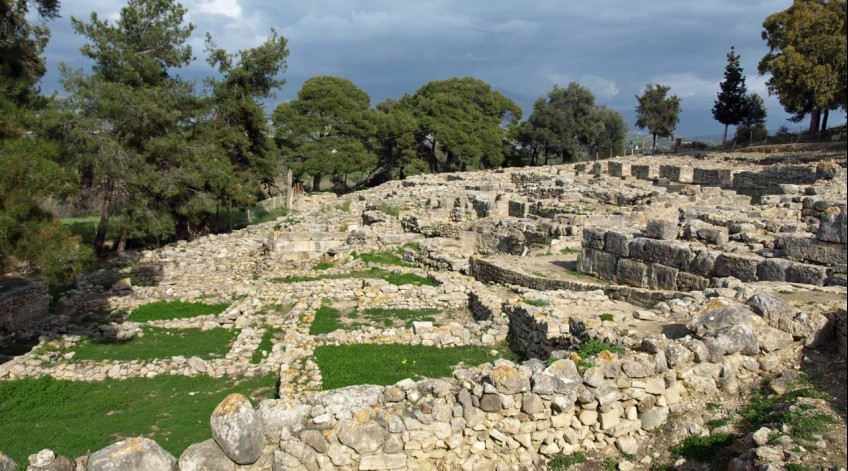ARCHAEOLOGICAL SITES
The archaeological site of Agia Triada
The archaeological site of Aghia Triada is situated 25 kilometres far from Agia Galini, via a 2 kilometres long dirt track.
Human activity in the area goes back to the 3rd millennium b.C.; during the flourishing of the nearby Phaistos (2600-1700 b.C.), only the ruins of a few modest buildings have been found at the place of the later Royal Villa.
This latter was built in circa 1600 b.C. and collapsed in 1500 b.C., possibly by the Mycenean invasion; a magnificent Mycenean-type megaron was later (14th -11th centuries b.C.) built on the ruins of the villa, along with the development of an urban settlement northern to the villa; the settlement has an interesting arcade, similar to the "agora" of the Classic period.
During the Geometric period (8th century b.C.) it was a ritual place, while in the Hellenistic times (4th - 1st centuries b.C.) a small sanctuary dedicated to Zeus Velchanos was built. Finally, the small one-aisled church of Aghios Georghios Galatas with very interesting wall paintings was built in the 14th century, during the Venetian domination; the church is found at the place of the yard of the Minoan villa.
Excavations on the site started in 1902, at the same time with those at Phaistos, and ended up in 1914. By the end of the 20th century the Italian Archaeological School repeated the surveys; excavations restarted and continue up to now.
The main part of the Villa is covered to protect the monument and restoration works of the whole site have been carried out.
The Minoan Royal villa was build during the New Palace period; although smaller than the palaces of Cnossos or Phaistos, it has all the features of Minoan architecture. It is a two-aisled, gamma-shaped building with "polythyra" (pier-and-door partition), skylight wells bringing light in the appartments, sactuaries, store rooms, treasuries, workshops, galleries yards and terraces; most of the places are stone paved. A lot of artefacts and other finds are housed in the Museums of the prefecture.
The so-called "Agora" and the settlement are situated at the Norteastern part of the Minoan villa. Both are dated to the Mycenean period (after 1450 b.C.). Eight big rooms are visible behind the arcade of the "Agora, whereas the ruins of the Mycenean settlement are situated at the West of the arcade.
Of the same period as "agora" is the Mycenean "megaron", built upon the store rooms of the Minoan Royal Villa.
The cemetery of Aghia Triada comprises two Early Minoan (3000-2300 b.C.)vaulted tombs, with complexes of funerary chambers; there are also chamber tombs of Late Minoan period (14th century b. C.) with burials within clay sarcophagus; one of the most important finds here is a stone sarcophagus, better known as "the wall painted sarcophagus".

